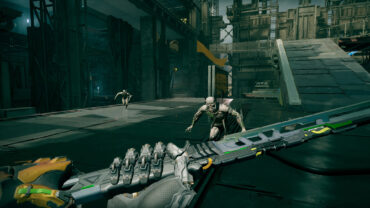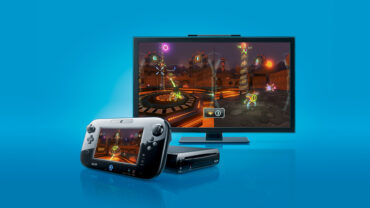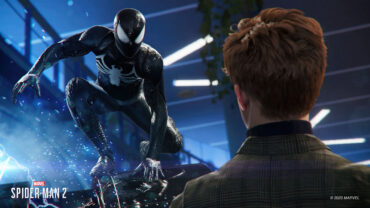You might think of pinball as a dusty relic of the distant past—your father’s or grandfather’s favorite pastime, perhaps—but believe it or not, these analog electro-wonders are enjoying a bit of a revival. Most pinheads would forgive you if you haven’t noticed, however. As far as hobbies go, pinball is expensive, punitive, and arcane in equal measure. The hyper-desirable machines produced during the ’90s golden age have ballooned in value in the intervening years, meaning that a Medieval Madness or an Addams Family in good condition is likely to run you around $10,000. Though trendy arcade and pinball bars have sprouted up in larger cities in the U.S. over the past decade, their offerings aren’t always in the best condition, and those of us who reside in more rural areas have slim pickings at best.
If you’re trying to enjoy some fiendishly difficult pinball pleasures from the comfort of your home—and you don’t feel like dropping a bundle of money on the officially licensed tables in Pinball FX3 or Pinball Arcade—you have another option: emulation. Yes, much in the way you can set up MAME (Multiple Arcade Machine Emulator) on your PC to relive your misbegotten youth dumping buckets of quarters into your local Ms. Pac-Man cabinet, there are programs that allow you to play on hundreds of different pinball tables with just a little finagling.
One of the most popular of these pinball programs, Visual Pinball, works a bit differently from the software emulators like ZSNES and RetroArch used to play old games. First released in late 2010 and regularly updated ever since, the freeware program Visual Pinball bills itself as a “simulator,” using a physics engine to help the virtual ball move realistically as it bounces off flippers, bumpers, and other features. And while you can simply load up a ROM of an old game in an emulator, playing classic machines in Visual Pinball requires dedicated volunteers to painstakingly rebuild every facet of their favorite tables in a virtual environment. As these craftsmen attest, the projects can be a lot more work than you might expect.
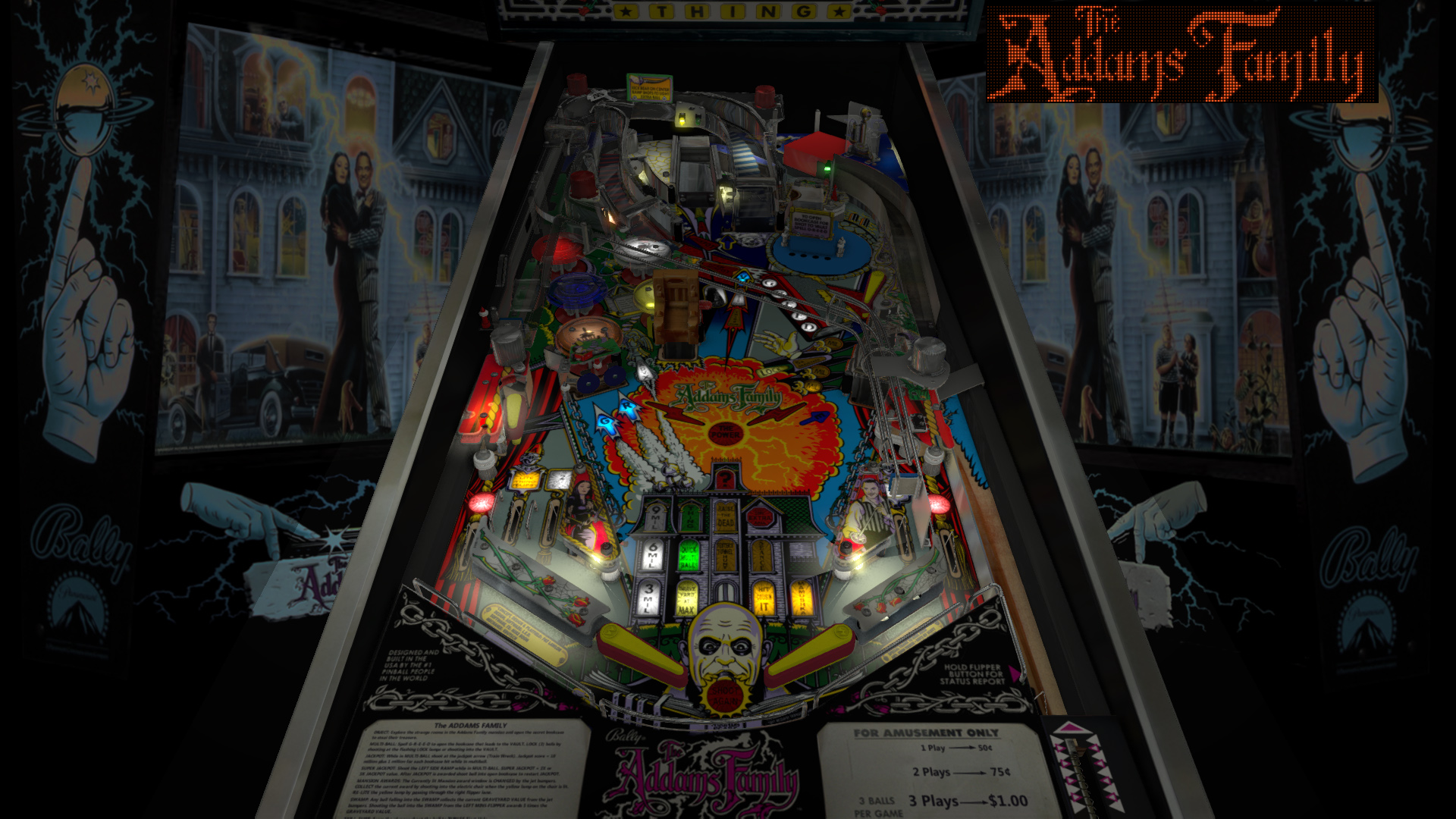
Original table by Williams. Recreated by Melon, Sliderpoint, Pookamoondo, and Xenonph.
When Philippe Castermans went to college in his native Netherlands, he shared a house with a friend who had inherited a Flash Gordon table from his uncle, and they spent many languid afternoons with beers in hand trying to beat each other’s high scores. Though it wasn’t the only machine he played during college, he points to having a pinball table in his home that he could play anytime as what triggered his enduring fascination with the hobby.
Years later, around 2012, Castermans noticed that the real-life machines at his local haunts were starting to vanish; faced with no other alternative, he soon discovered the Virtual Pinball Forums, where he began to build his digital library. “When you’re in the U.S., all you have to do is pull up the pinball map and walk five-hundred meters to find a machine,” he said, laughing. “In the Netherlands, there are only really two places that I know of, in Amsterdam and Rotterdam. So, if you don’t live there, Visual Pinball is the best you can do.”
Like a lot of hobbyists, Castermans spent a lot of time lurking on the forums and sampling the community’s tables before he started to build them himself. Initially, he tinkered with elements of finished projects that rankled him—the Addams Family he downloaded had a few lights that blinded him, so he turned down the brightness in the settings. Eventually, he started using editing programs like Photoshop to fuss with the playfield graphics, and from there he started developing aesthetic-oriented mods for some of the site’s more popular machines.
Once he realized that he had developed skills to construct his own tables, he started on Black Knight 2000, one of the machines that he had poured hours into back in college. “It seemed like nobody else wanted to build it, so I decided to do it myself,” Castermans said. “I played a real one at the Dutch pinball museum, but it was so much slower than I remembered. Older machines are always slower. I wanted it to have that fast-feel again, so I could play it until I dropped.”
For BK2K, Castermans endeavored to put together the project almost entirely by himself, including visuals, physics, and more. While several creators on the forum offered to help, Castermans mostly declined, though he took pointers from some of the community’s elder statesmen. (“They had no [way] of knowing that I was actually serious,” he explained. “It’s a delicate balance between helping someone and doing their work for them.”) He had some basic experience with coding in Unreal Engine, but he had to teach himself how to use the open-source 3D graphics program Blender, which presented a stiff challenge.
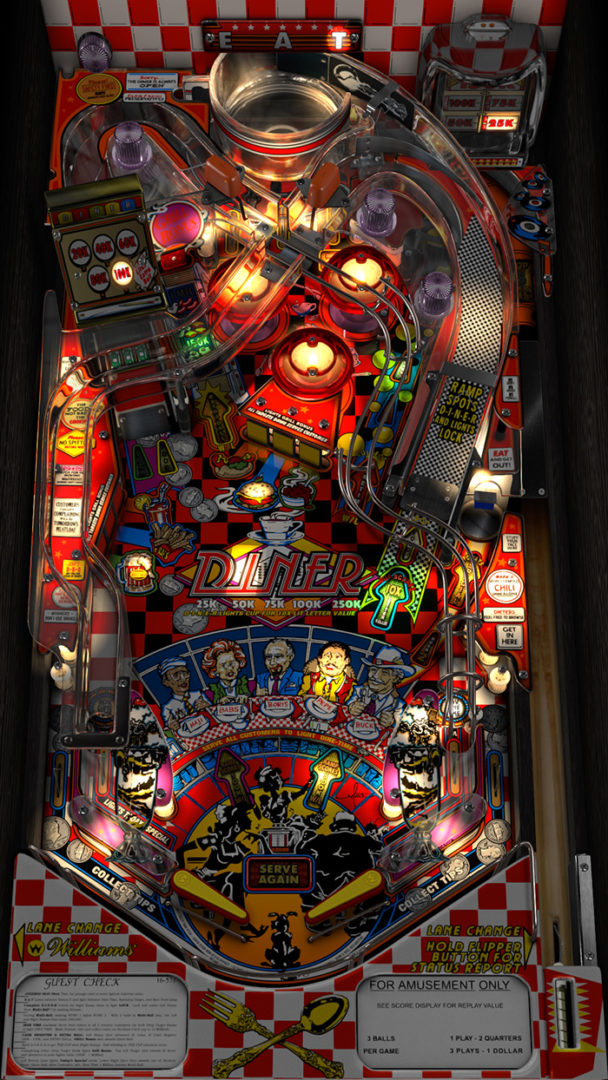
Original table by Williams.
Recreated by Philippe Castermans (flupper1), Ben Logan, and Bodydump
“I thought it would be easier because I had previously used [competitor] SketchUp for a project or two, but what I learned was that SketchUp was like a bicycle with [training] wheels,” he said. “Blender is something else entirely.”
Since he first released BK2K, Castermans has worked on a handful of other Visual Pinball tables, including Diner, White Water, and Tales of the Arabian Nights. Though he maintains what he deems a “slow” pace, releasing about one machine a year, he appreciates the freedom that his hobby brings him. For example, he notes that Diner is slightly lesser-known compared to his other work, but he only managed to play it a handful of times in the early ’90s, and this project finally granted him the opportunity to become intimately familiar with the game’s rules and idiosyncrasies. Since he recreates these ancient tables for fun, nobody can tell him which one to tackle next, though the more obscure ones can sometimes present issues.
“The main reason that I do a lot of older tables, besides the fact that they’re the ones that I personally enjoy, is because a lot of people tend to order new plastics for them,” he said. “That usually means that someone has scanned the artwork at a super-high resolution, which makes it a lot easier to put together. For the graphics, one of the guys I worked with collects artwork for pinball tables, so I only start when I have that full collection of art… For Diner, I had to work a little harder to get the art, and [do] Photoshop work to clean it up, prepare the images.”
You can set up Visual Pinball on your home computer fairly easily with just a bit of fiddling, but many on the forums prefer to build physical cabinets that resemble their more analog cousins, with TVs mounted inside. Castermans built one of his own for around 1,000 euros. While he uses the motion controls of an old PC gamepad to simulate the nudging and tilt mechanisms, he sprung the extra money for the exact switches that enthusiasts use on real tables to control the flippers. “Otherwise, it doesn’t feel right,” he says. “You can’t emulate that.”
While Castermans says he’s more than proud of his work over the past few years, he feels that there are others on the forum who have utterly mastered the peculiar craft of modelling these machines. He names one in particular as a standout: Juan Pablo Salas, better known as “JPSalas,” a system administrator in Norway who has become famous in the community for both the quality and quantity of his Visual Pinball output, with dozens and dozens of tables under his belt. “[Salas] is someone that I would absolutely want to work with on any table,” Castermans says. “While I take months to put together a table, trying to do it in some new way, he can put one together in a matter of days, because he knows the program very, very well. It’s very impressive.”
Like Castermans, Salas grew up playing pinball in his native Spain in the early ’70s, stealing a game or two whenever his friends would score an elusive “special”—a free game. When he discovered the forums in 2005, however, he began to realize that he could use Visual Pinball to catch up on the intervening 30 years of pinball history. After teaching himself to use the program over a few months, he managed to create a version of the classic Taxi, and then followed that up with many other beloved pins, like Attack from Mars.
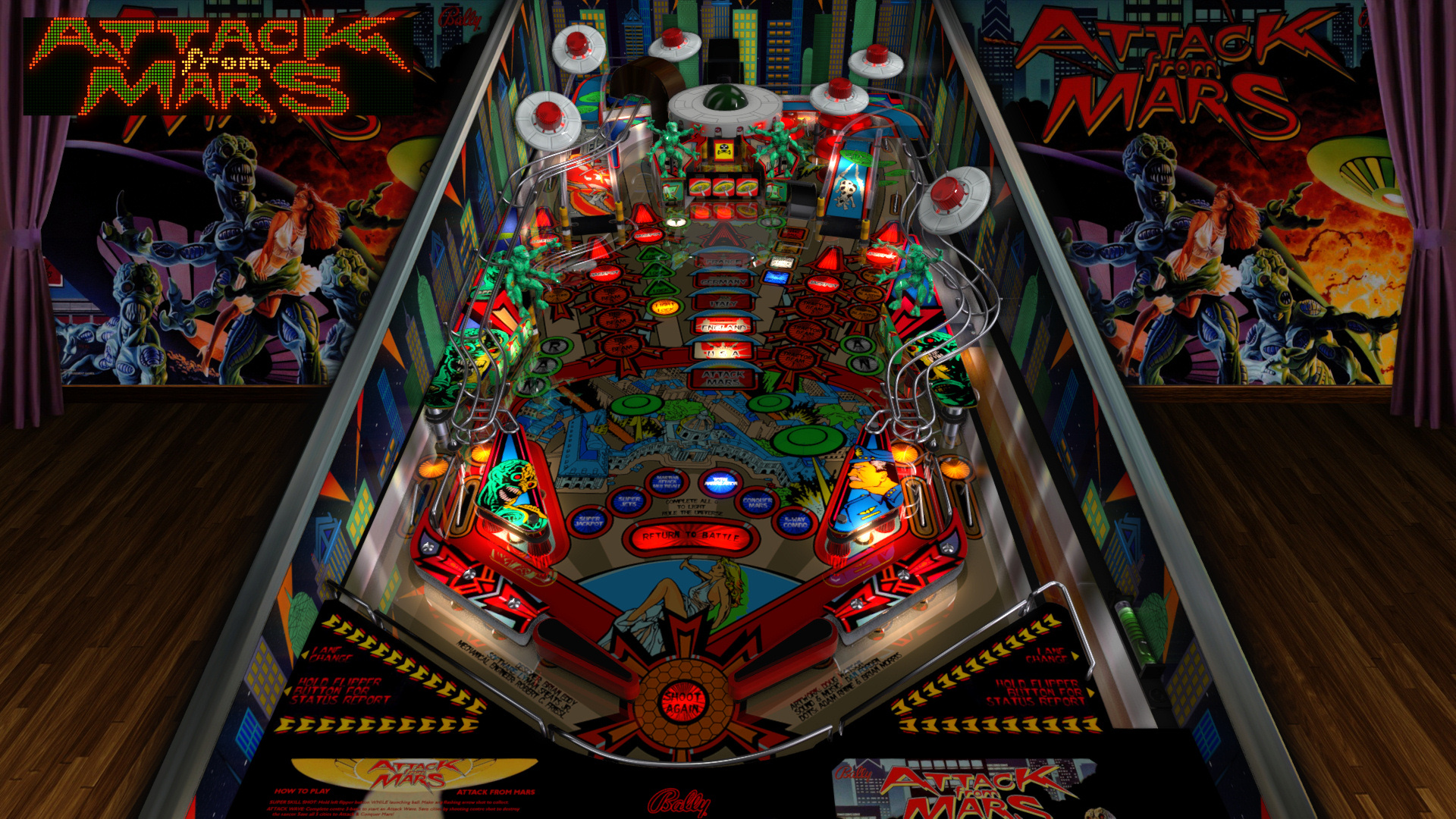
Original table by Williams. Recreated by Juan Pablo Salas (JPSalas).
More recently, Salas endeavored to build out some of his favorite machines from his youth, because they remain almost entirely unknown to the bulk of the pinball audience. (He also takes requests from the community for his next projects.) Owing to their age, some of these tables hardly exist in the real world anymore, which plays into Salas’ preservationist instinct; for example, Taito of Brazil’s 1978 table Space Patrol is so obscure that Salas could only find a single image of the physical original to base his virtual creation on.
As with video game emulation, the Visual Pinball community’s activities could be considered legally dubious, since all of the tables on offer are ostensibly unlicensed. Still, while it’s certainly possible that Bally/Williams or more modern manufacturers like Stern might interfere with the space, for his part, Castermans said he doesn’t lose much sleep over it. “I do worry about it a little bit,” he said. “That’s why people tend to not do the very new pinball machines [made by Stern or Jersey Jack], because that would definitely be a direct strike, but so far, nobody has protested me building these really old tables.
“We do it out of love, and I think they realize that.”
Header image: Black Knight 2000 in Visual Pinball X. Original table by Williams. Recreated by Philippe Castermans (flupper1).

Steven T. Wright is a reporter and novelist living in the Twin Cities. He is the former independent games columnist for Variety, and he has written for Rolling Stone, Polygon, Vice, and many others. He almost named his novel after a city in Final Fantasy, but his friends talked him out of it.



